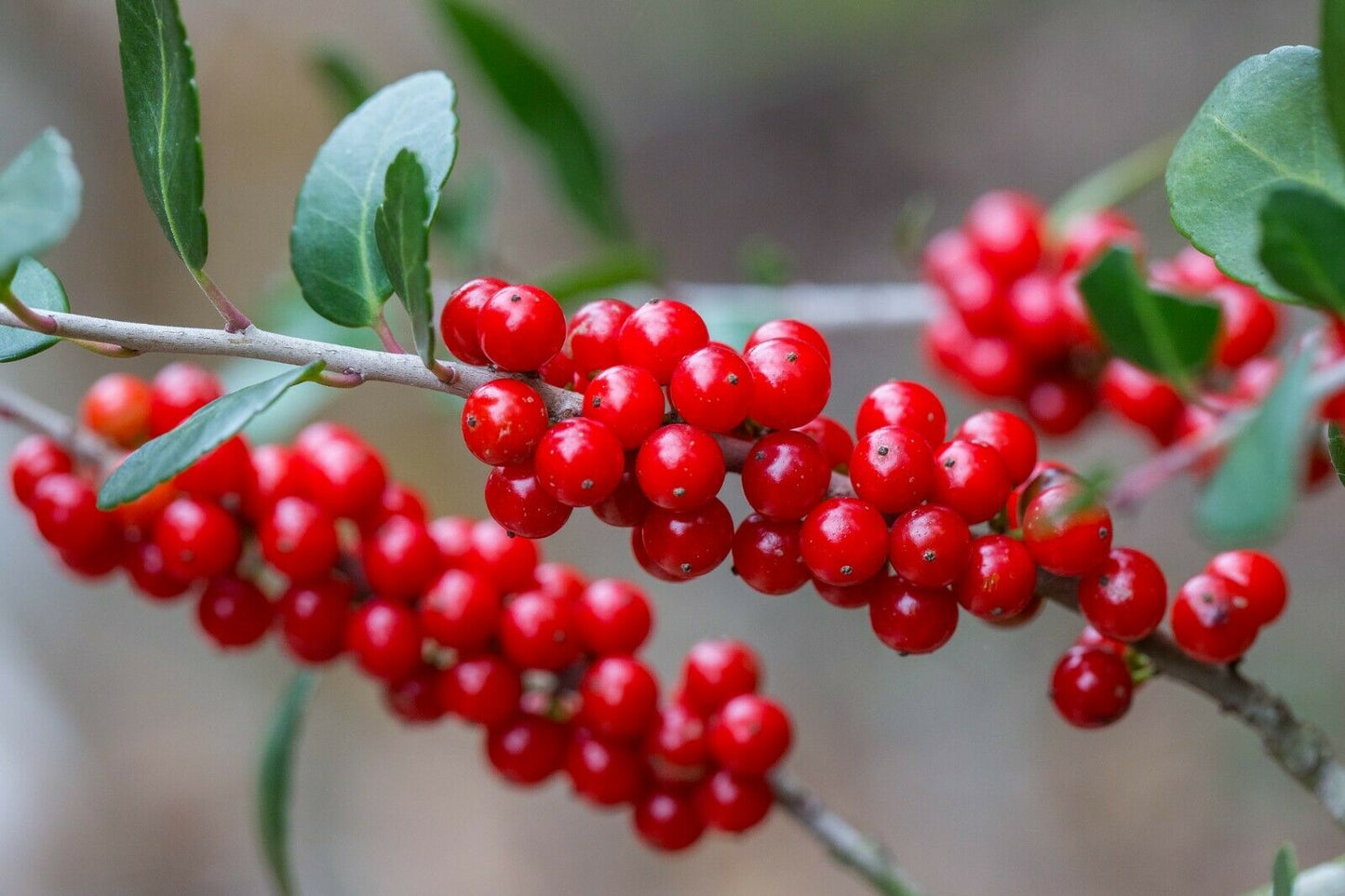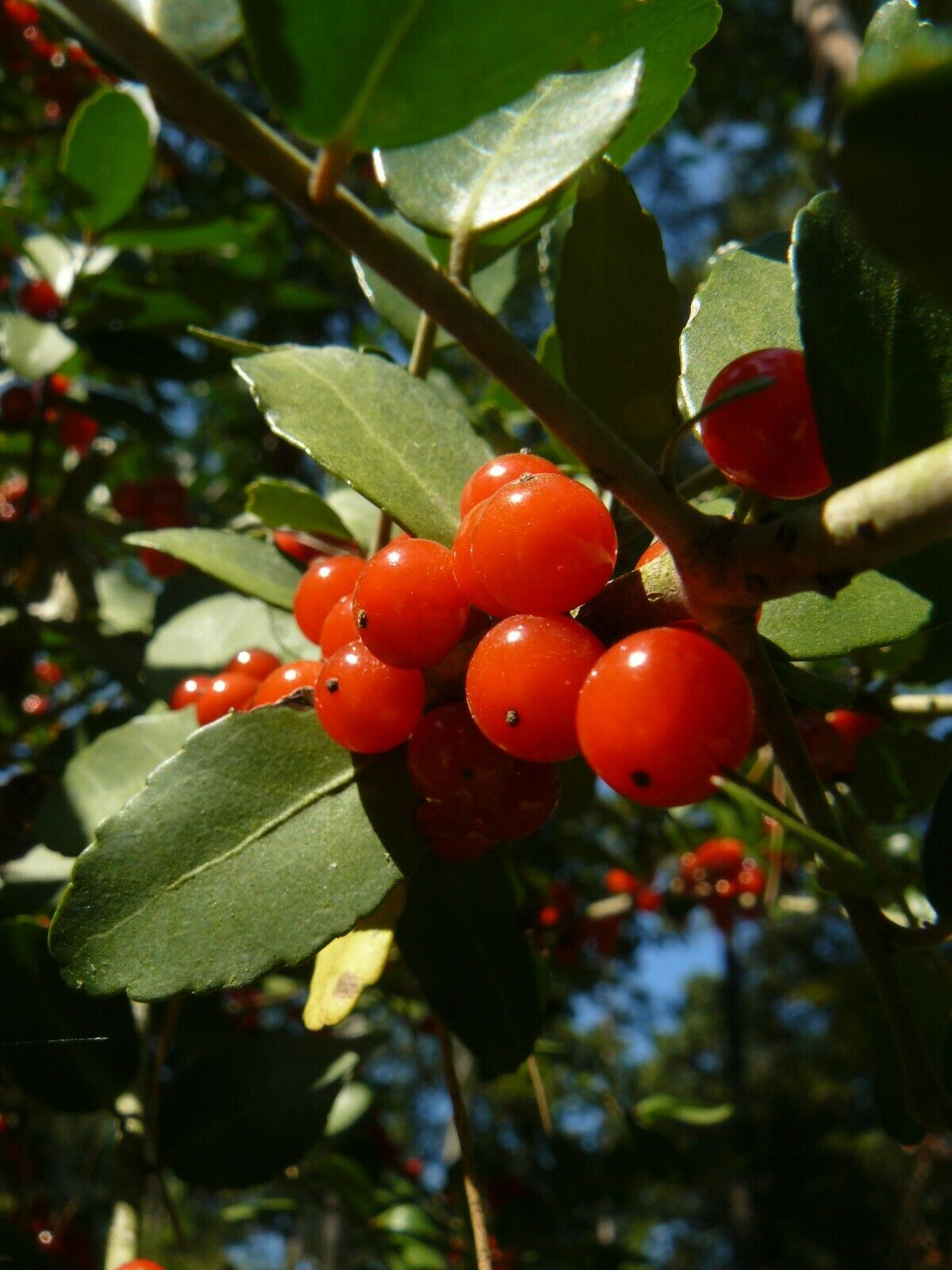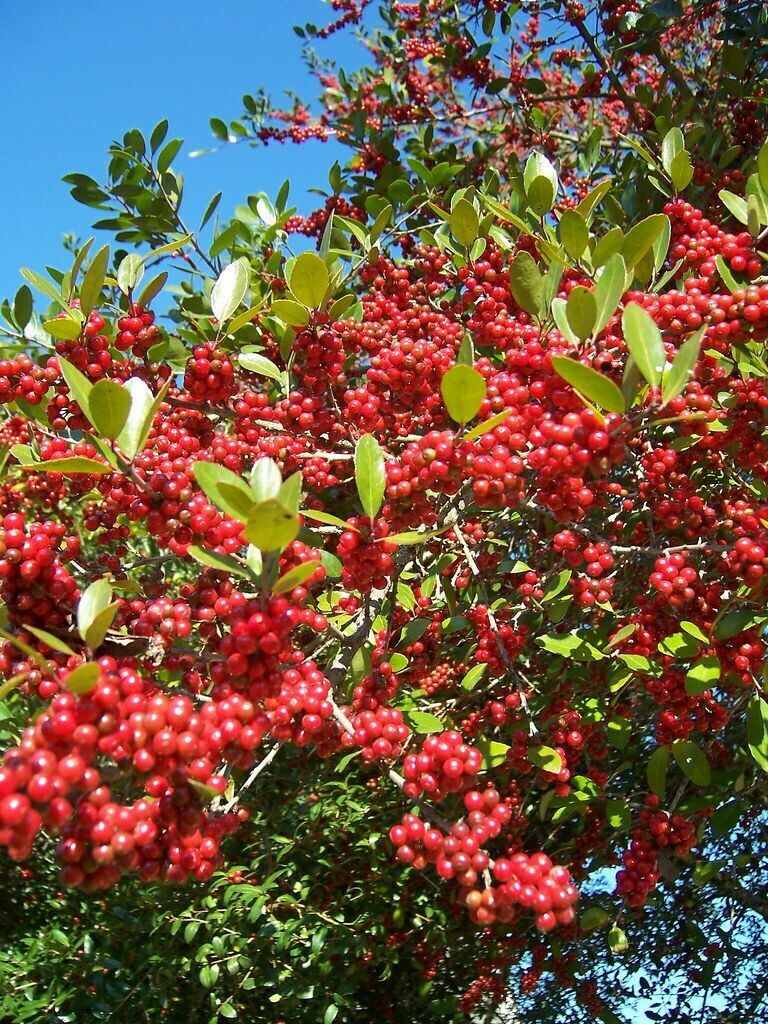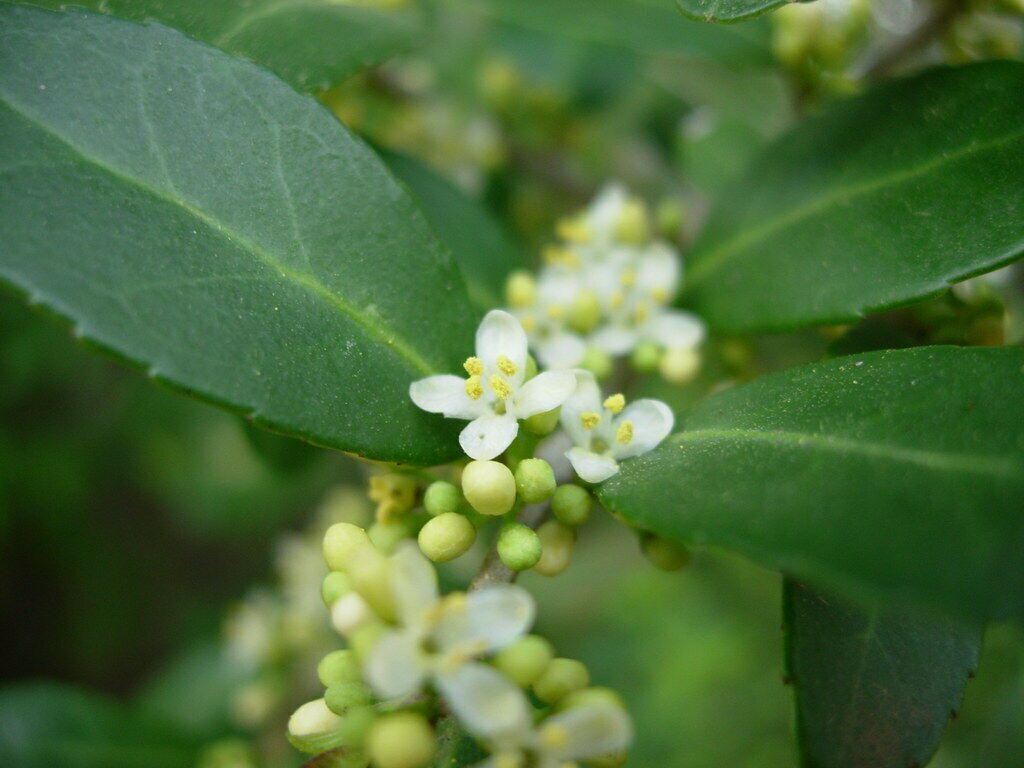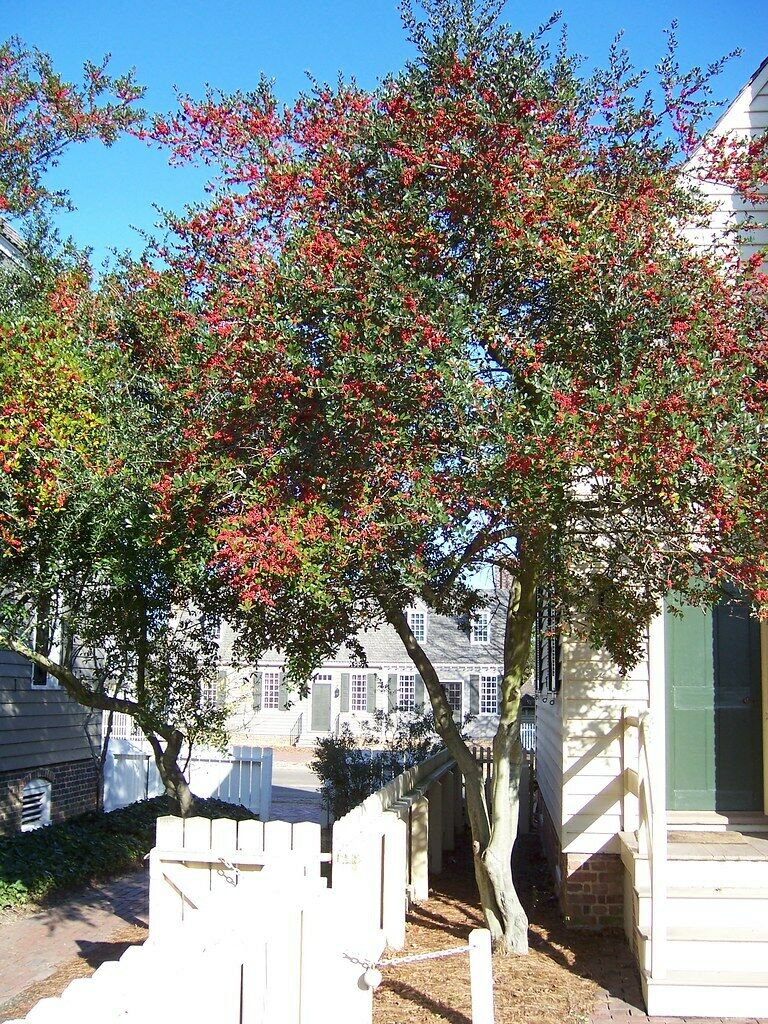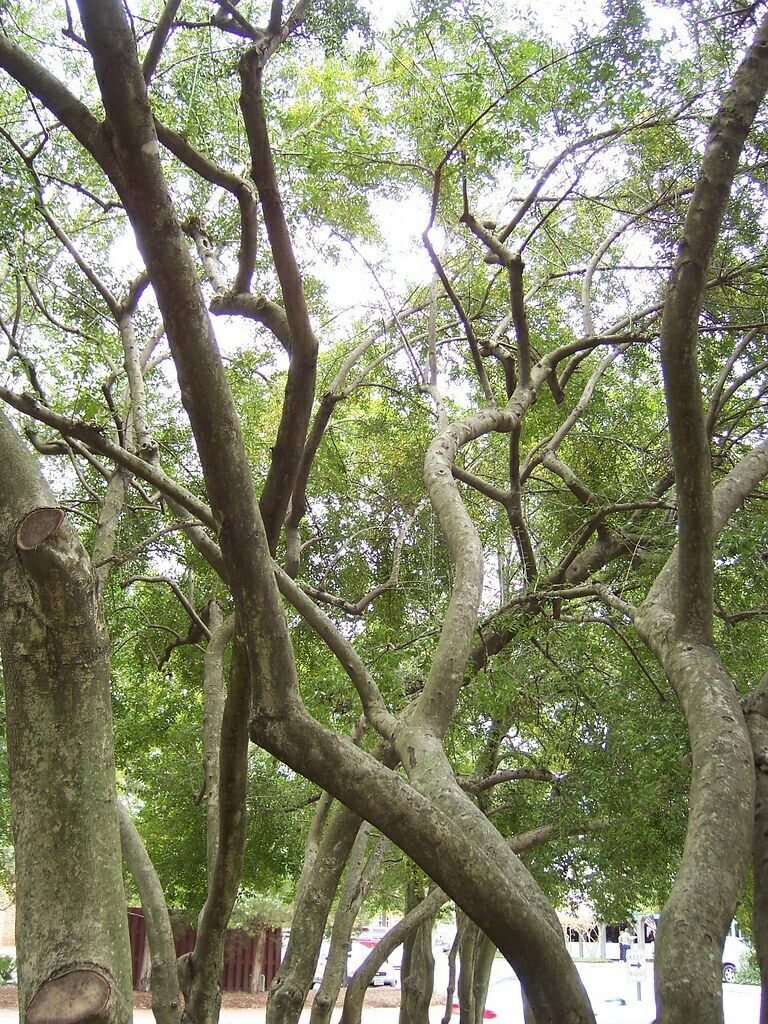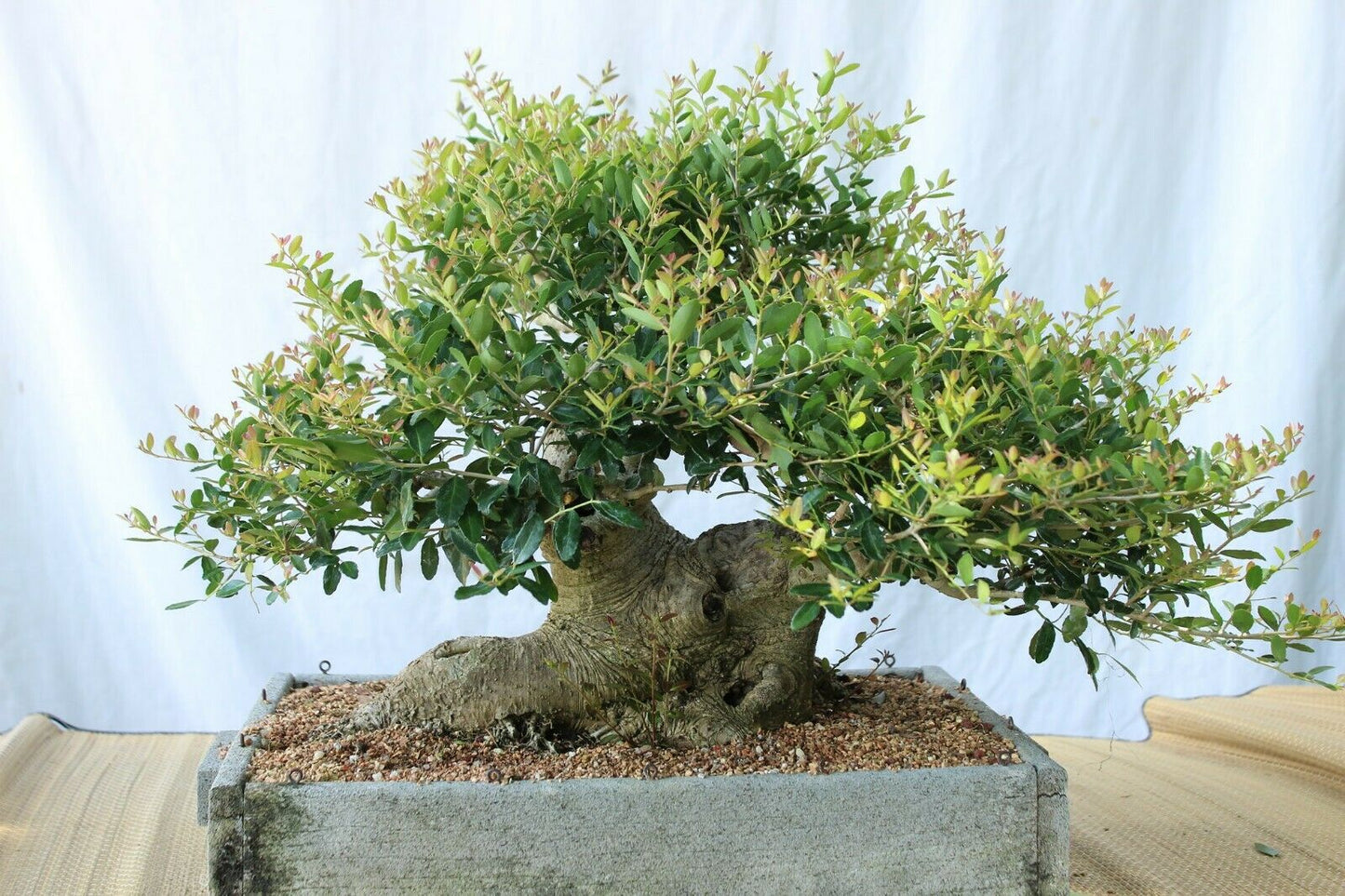Floridaseeds
Yaupon Holly Ilex vomitoria 500 Seeds USA Company
Yaupon Holly Ilex vomitoria 500 Seeds USA Company
Couldn't load pickup availability
Ilex vomitoria, commonly known as yaupon holly, is a species of holly native to southeastern United States, from Virginia to Florida and west to Texas. Here are some key characteristics of Ilex vomitoria:
Appearance: Yaupon holly is a small evergreen tree or shrub that typically grows to heights of 5 to 9 meters (16 to 30 feet), though it can sometimes reach up to 15 meters (49 feet) tall. It has a dense, rounded crown and multiple branches. The leaves are small, oval-shaped, and dark green, with serrated edges.
Flowers: Yaupon holly produces small, inconspicuous white flowers that bloom in the spring. The flowers are dioecious, meaning individual plants have either male or female flowers.
Fruit: The female plants produce small, round, bright red berries that persist on the tree through the winter. The berries are an important food source for birds and other wildlife.
Habitat: Yaupon holly is typically found in coastal areas, sandy woodlands, and along the edges of swamps and marshes. It is tolerant of a wide range of soil types and can withstand salt spray, making it well-suited for coastal landscapes.
Cultural significance: Yaupon holly has a long history of use by Native American tribes, who brewed a caffeinated tea from the leaves and twigs. This tea, known as "black drink" or "asi," was used ceremonially and for its stimulant properties. Despite its common name, there is no evidence that yaupon tea induces vomiting, as its scientific name might suggest.
Landscaping: Yaupon holly is commonly used in landscaping for its attractive foliage, dense growth habit, and tolerance of pruning and shaping. It can be grown as a hedge, screen, or specimen plant, and dwarf cultivars are available for smaller spaces.
Wildlife value: Yaupon holly provides important habitat and food for birds, small mammals, and insects. The berries are eaten by a variety of bird species, including mockingbirds, cedar waxwings, and bluebirds.
Growing Instructions
The seeds have a dormancy period. They need a period of chilling which simulates winter conditions to break their dormancy.
- Soak the seeds in water for several hours.
- Prepare a mixture of half potting soil and half sand, perlite or vermiculite. Water the mixture so that it is moist but not wet.
- Put the seeds in the mixture.
- Put the mixture in a ziplock bag.
- Put the bag in the refrigerator and leave it there for 12 weeks.
- Sow the seeds in pots with potting soil. Cover them with a thin layer of soil.
- Water the seeds.
- The seeds will sprout in 1 to 2 weeks.
- When the seedlings are a few inches tall, they can be transplanted.
Materials
Materials
Shipping & Returns
Shipping & Returns
Dimensions
Dimensions
Care Instructions
Care Instructions
Share
